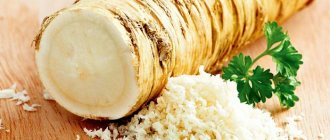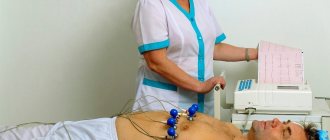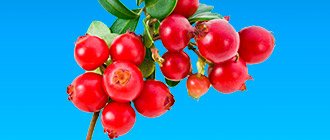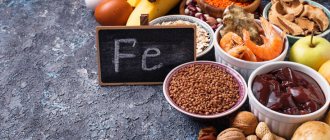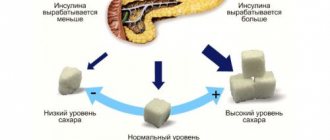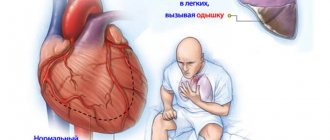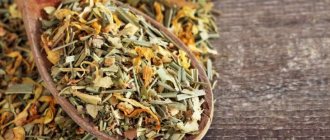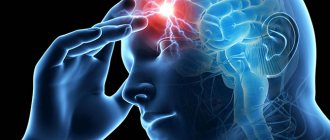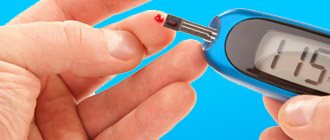General recommendations for nutrition for hypotensive patients:
- Meals should be small and frequent. If you eat a large amount of food at once, you will become oversaturated (overeating), and your blood pressure will drop even more.
- In this state, you should not allow yourself to feel hungry, no exhausting diets for weight loss (hypotonic people are usually quite thin people), no long breaks between meals.
- If you can’t eat on time, you need to be prudent: always carry something nutritious and high-calorie, preferably sweet, with you, just in case. It could be caramel, halva, a piece of chocolate, nuts, dried fruits, banana. When you feel the first attack of weakness caused by hunger, you must immediately drown it out by eating some of these foods. Prolonged fasting with low blood pressure can cause fainting.
- Hypotonics are much luckier in terms of nutrition than hypertensives. People with low blood pressure are allowed to eat almost everything, but, of course, in moderation. Food should be tasty, healthy, high in calories, varied and rich in vitamins. A balanced diet that includes healthy microelements, fats, proteins, and carbohydrates in sufficient quantities will help you stay in shape and regularly recuperate.
- Iron deficiency anemia is a common companion to hypotension. Therefore, the menu of a person with low blood pressure should include foods containing iron (buckwheat, liver, pomegranate, walnuts, spinach).
- With hypotension, there is often a poor appetite; it can be increased by consuming hot and spicy spices, as well as by the pleasant appearance of the prepared dish. A beautiful table setting will not go amiss. The process of eating should bring pleasure and evoke positive emotions. It is good to stimulate the appetite of a person with low blood pressure with a long walk before meals: fresh air and moderate fatigue can cause a healthy feeling of hunger.
- Among other things, a hypotensive person must monitor his emotional background. Excessive excitement and neuroses can cause either complete loss of appetite or insatiable hunger. Both will have an equally bad effect on blood pressure, which may drop even further.
General rules
Arterial hypotension ( hypotension ) is considered to be a state of low blood pressure , in which stable systolic blood pressure is below 90, and diastolic blood pressure is below 60 mm Hg.
Art. This condition can be either a physiologically normal phenomenon (with a hereditary predisposition) or pathological (primary and secondary hypotension). Primary hypotension, which most often manifests itself in the form of neurocirculatory asthenia , is an independent disease caused by the influence of negative psycho-emotional factors leading to stress and chronic fatigue syndrome.
Secondary arterial hypotension develops against the background of other diseases ( stomach ulcers , osteochondrosis of the cervical spine, pancreatitis , anemia , tuberculosis , diabetes mellitus , brain injuries, hepatitis , diseases of the endocrine system, cystitis , circulatory disorders, intoxication, rheumatism , as a side effect of medications , alcoholism , mental trauma, heart failure) and treatment of this form of hypotension is aimed primarily at treating the underlying disease.
Treatment of primary hypotension requires an integrated approach and includes correction of the patient’s lifestyle with taking medications that help increase arterial tone. Lifestyle correction is aimed at proper nutrition, healthy sleep, alternating psychological stress and rest, and moderate physical activity.
Diet for low blood pressure
A diet for low blood pressure, as such, is absent in the classical sense of this term. However, proper nutrition with low blood pressure helps normalize blood pressure and improve the general condition of the patient. The basis should be a physiologically complete diet containing all the necessary macronutrients with a high content of table salt, potassium, magnesium, and vitamins . At the same time, it is recommended to include foods that increase blood pressure in your diet.
The diet should include:
- Products (sauerkraut, pickles and other pickles) and dishes with a moderately high salt content (in the absence of contraindications) up to 15-20 g per day. Sodium binds water in the body, which leads to an increase in circulating blood volume and an increase in blood pressure.
- Fatty foods (butter, cheeses, fatty meats, poultry, fish, offal, heavy cream). Fat contributes to an increase in blood pressure to a certain extent, since the circulation of cholesterol in the bloodstream somewhat impedes blood flow, thereby causing an increase in pressure.
- Dishes richly flavored with herbs/spices (allspice, bay leaf, cumin, cinnamon, basil), since spices increase the activity of the endocrine glands, which contributes to the narrowing of blood vessels and increased blood pressure. It is recommended to include various sauces (mustard, horseradish, ketchup) and smoked foods, as well as spicy soups with vegetable broths in the diet.
- Baked goods that contain high-calorie foods and carbohydrates - butter, eggs, spices, premium flour, which help normalize blood pressure.
- Products high in starch (rice, potatoes, semolina, oats) and amino acids (nuts of all varieties).
- Tonic foods and drinks containing caffeine (chocolate, cocoa, natural coffee, green tea, cola, energy drinks). At the same time, coffee and tea should be sweet, since arterial hypotension is often combined with hypoglycemia (decreased blood glucose concentration).
- Foods rich in vitamin C and B vitamins (especially B3 ) - milk, carrots, egg yolk, yeast, liver, sprouted wheat grains, sorrel, spinach, pomegranate).
- Vegetables and fruits such as celery, sour apples, lettuce, and cabbage have pronounced tonic properties. Honey and bee products are extremely useful.
- Drinking regime - the volume of free liquid should be at least 2 l/day.
Meals should be fractional, in small portions. The diet is especially relevant for patients with postprandial hypotension (a decrease in blood pressure caused by food intake).
To prevent postprandial reactions, it is recommended to include in the diet the intake of adaptogens, which include plant substances that have a stimulating effect on the central/autonomic nervous system (Rhodiola rosea, Leuzea, Eleutherococcus, Aralia, Schisandra, ginseng root, licorice root), which can be added to tea or other drinks.
Effect on blood pressure
Separately, the effect of nuts on blood pressure should be highlighted. They strengthen the walls of blood vessels, give them elasticity, and also, to a certain extent, affect the composition of the blood. The minerals they contain are necessary to increase or decrease osmotic pressure. It is important to know that each type of nut will affect blood pressure differently.
Almonds and coconut, in addition to their other beneficial properties, also have an effect on blood pressure - such nuts lower blood pressure.
It is noted that walnuts can sometimes lower blood pressure due to their magnesium content. Walnuts especially affect the diastolic (popularly “lower”) indicator. But most often, walnuts increase blood pressure. They will give this effect together with other products that increase blood pressure: meat, liver, pomegranate, hard cheese, olive oil, berries, buckwheat. But they can also do it on their own.
Pecans and Brazil nuts can also increase blood pressure.
Regardless of the variety, nuts are very nutritious and healing due to their excellent composition
Authorized Products
A diet for hypotension should provide the body with the physiological norm of proteins, fats and carbohydrates and should include foods and dishes with a moderately high salt content - various pickles, canned meat and fish, smoked meats, salted fish, fish caviar, raw smoked sausages.
It is recommended to include in the diet dishes richly flavored with herbs/spices (bay leaf, garlic, allspice, cloves, cumin, cinnamon, basil, dill, parsley, as well as various sauces (ketchup, mustard, horseradish), spicy meat, fish and vegetables broths and first courses based on them (kharcho soup, solyanka, borscht). The diet should contain dairy and fermented milk products. Fatty meats, fish, poultry, cheeses, butter, chicken eggs, foods high in starch are useful in the diet (rice, potatoes), various types of nuts, honey and bee products.
An important component of the diet are foods containing vitamins and microelements - liver, egg yolk, sprouted wheat grains, yeast, sorrel, spinach, legumes, celery.
A mandatory element of the diet of hypotensive patients should be foods and drinks containing caffeine (cocoa, chocolate, natural coffee, cola, strong green and black tea, energy drinks). As for fruits, it is recommended to include black currants, cherries, lemons, pomegranates and their freshly squeezed juices, and rosehip decoction in your diet.
Table of permitted products
| Proteins, g | Fats, g | Carbohydrates, g | Calories, kcal | |
Vegetables and greens | ||||
| canned vegetables | 1,5 | 0,2 | 5,5 | 30 |
| zucchini | 0,6 | 0,3 | 4,6 | 24 |
| cauliflower | 2,5 | 0,3 | 5,4 | 30 |
| potato | 2,0 | 0,4 | 18,1 | 80 |
| bulb onions | 1,4 | 0,0 | 10,4 | 41 |
| carrot | 1,3 | 0,1 | 6,9 | 32 |
| beet | 1,5 | 0,1 | 8,8 | 40 |
| pumpkin | 1,3 | 0,3 | 7,7 | 28 |
| horseradish | 3,2 | 0,4 | 10,5 | 56 |
| spinach | 2,9 | 0,3 | 2,0 | 22 |
| sorrel | 1,5 | 0,3 | 2,9 | 19 |
Fruits | ||||
| apricots | 0,9 | 0,1 | 10,8 | 41 |
| watermelon | 0,6 | 0,1 | 5,8 | 25 |
| bananas | 1,5 | 0,2 | 21,8 | 95 |
| melon | 0,6 | 0,3 | 7,4 | 33 |
| nectarine | 0,9 | 0,2 | 11,8 | 48 |
| peaches | 0,9 | 0,1 | 11,3 | 46 |
| apples | 0,4 | 0,4 | 9,8 | 47 |
Berries | ||||
| strawberry | 0,8 | 0,4 | 7,5 | 41 |
| raspberries | 0,8 | 0,5 | 8,3 | 46 |
Mushrooms | ||||
| marinated mushrooms | 2,2 | 0,4 | 0,0 | 20 |
Nuts and dried fruits | ||||
| nuts | 15,0 | 40,0 | 20,0 | 500 |
| raisin | 2,9 | 0,6 | 66,0 | 264 |
| dried apricots | 5,2 | 0,3 | 51,0 | 215 |
| seeds | 22,6 | 49,4 | 4,1 | 567 |
| prunes | 2,3 | 0,7 | 57,5 | 231 |
Cereals and porridges | ||||
| buckwheat (kernel) | 12,6 | 3,3 | 62,1 | 313 |
| semolina | 10,3 | 1,0 | 73,3 | 328 |
| white rice | 6,7 | 0,7 | 78,9 | 344 |
Flour and pasta | ||||
| pasta | 10,4 | 1,1 | 69,7 | 337 |
| noodles | 12,0 | 3,7 | 60,1 | 322 |
Confectionery | ||||
| jam | 0,3 | 0,2 | 63,0 | 263 |
| jelly | 2,7 | 0,0 | 17,9 | 79 |
| marshmallows | 0,8 | 0,0 | 78,5 | 304 |
| pastry cream | 0,2 | 26,0 | 16,5 | 300 |
| paste | 0,5 | 0,0 | 80,8 | 310 |
Ice cream | ||||
| ice cream | 3,7 | 6,9 | 22,1 | 189 |
Chocolate | ||||
| chocolate | 5,4 | 35,3 | 56,5 | 544 |
Raw materials and seasonings | ||||
| mustard | 5,7 | 6,4 | 22,0 | 162 |
| honey | 0,8 | 0,0 | 81,5 | 329 |
| sugar | 0,0 | 0,0 | 99,7 | 398 |
Dairy | ||||
| milk 4.5% | 3,1 | 4,5 | 4,7 | 72 |
| kefir | 3,4 | 2,0 | 4,7 | 51 |
| cream 35% (fat) | 2,5 | 35,0 | 3,0 | 337 |
| sour cream 30% | 2,4 | 30,0 | 3,1 | 294 |
| curdled milk | 2,9 | 2,5 | 4,1 | 53 |
Cheeses and cottage cheese | ||||
| parmesan cheese | 33,0 | 28,0 | 0,0 | 392 |
| cottage cheese | 17,2 | 5,0 | 1,8 | 121 |
Meat products | ||||
| boiled beef | 25,8 | 16,8 | 0,0 | 254 |
| beef liver | 17,4 | 3,1 | 0,0 | 98 |
| boiled veal | 30,7 | 0,9 | 0,0 | 131 |
| rabbit | 21,0 | 8,0 | 0,0 | 156 |
| bacon | 23,0 | 45,0 | 0,0 | 500 |
Sausages | ||||
| smoked sausage | 9,9 | 63,2 | 0,3 | 608 |
Bird | ||||
| boiled chicken | 25,2 | 7,4 | 0,0 | 170 |
| turkey | 19,2 | 0,7 | 0,0 | 84 |
| duck | 16,5 | 61,2 | 0,0 | 346 |
| smoked duck | 19,0 | 28,4 | 0,0 | 337 |
| goose | 16,1 | 33,3 | 0,0 | 364 |
Eggs | ||||
| chicken eggs | 12,7 | 10,9 | 0,7 | 157 |
Fish and seafood | ||||
| smoked fish | 26,8 | 9,9 | 0,0 | 196 |
| black caviar | 28,0 | 9,7 | 0,0 | 203 |
| salmon caviar granular | 32,0 | 15,0 | 0,0 | 263 |
| salmon | 19,8 | 6,3 | 0,0 | 142 |
| salmon | 21,6 | 6,0 | — | 140 |
| trout | 19,2 | 2,1 | — | 97 |
Oils and fats | ||||
| butter | 0,5 | 82,5 | 0,8 | 748 |
| ghee | 0,2 | 99,0 | 0,0 | 892 |
Non-alcoholic drinks | ||||
| mineral water | 0,0 | 0,0 | 0,0 | — |
| cola | 0,0 | 0,0 | 10,4 | 42 |
| black tea with milk and sugar | 0,7 | 0,8 | 8,2 | 43 |
Juices and compotes | ||||
| apricot juice | 0,9 | 0,1 | 9,0 | 38 |
| carrot juice | 1,1 | 0,1 | 6,4 | 28 |
| * data is per 100 g of product | ||||
High blood pressure
Recipes using nuts:
Remedy for hypertension with honey.
- mix walnuts 100 grams and honey - a tablespoon;
- divide the mixture into five doses;
- Take regardless of food 5 times a day.
To treat hypertension, consume 100 and 60 grams of nuts with honey every day, respectively, for 1.5 months
It is extremely undesirable to melt honey using high temperatures, as its structure changes and the product loses its beneficial properties. It is preferable to use May honey, which practically does not crystallize, or melt a small amount of honey with lemon juice. In combination, walnuts with honey and vitamin C contained in lemon provide a vascular strengthening effect and increase immunity.
Infusion on the partitions.
- fill 1/3 of a half-liter bottle of tinted glass or plastic with walnut partitions;
- pour vodka;
- leave for 3-4 weeks;
- strain and take 1 tablespoon before meals.
Pistachios and hazelnuts can also lower blood cholesterol levels and blood pressure, and give elasticity to blood vessels. It is enough to eat 50–80 grams of nuts per day.
Reviews and results
- “...Hypotonic from birth. For as long as I can remember, my blood pressure has always been 100/75, 90/60, and sometimes lower. This does not cause me any particular concern, but periodically (when the weather changes, after severe tension, stress), the pressure drops to 80/60, severe headaches, nausea, and dizziness appear. I know well which foods increase blood pressure, but strong tea and coffee help me; in severe cases, I take 2 caffeine tablets. From time to time I take a course of biological stimulants - Aralia Manchurian or Schisandra. A contrast shower helps a lot.”
Low pressure
Recipes for hypotension:
Raising blood pressure with pine nuts.
- Rinse a glass of nuts.
- Pour in 0.5 liters of vodka.
- Leave for 2 weeks. Shake every day.
- Decant and store this vodka in the refrigerator. Pour the same amount of new vodka over the nuts again.
- Leave for 3 weeks.
- Strain and mix the infusion with the first portion.
Take in a course of 35–45 days. Take 20 drops diluted in a glass of water on an empty stomach, 2-3 times a day. Take only if you are sure that you are not allergic to pine nuts.
Other Features of the DASH Diet
The main condition of this diet is that you need to eat foods filled with phosphorus, magnesium, potassium and calcium. Such products can improve heart function, remove excess fluid from the body, and strengthen the walls of blood vessels. Various foods are rich in nutrients:
- low-fat fermented milk (for example, yoghurts and curdled milk);
- pine nuts, hazelnuts, cashews;
- dried fruits (dried apricots, prunes, dates, raisins);
- citrus fruits, as well as apples, apricots and peaches;
- sea fish (tuna, cod, salmon);
- cereals in the form of oatmeal, rice, buckwheat;
- legumes (beans, lentils, peas);
- vegetables in the form of beets, sweet peppers, cabbage, carrots;
- berries (raspberries, gooseberries, rose hips).
The creators of a healthy diet for hypertensive patients do not want patients to suddenly switch to an unusual diet. Over time, the body of a hypertensive patient will be able to adapt to a new way of eating.
The medical doctor offers to make an appointment with a cardiologist. A full range of diagnostics and treatment of heart diseases in Tula. Tel. for appointment +7 (4872) 39-30-33.
